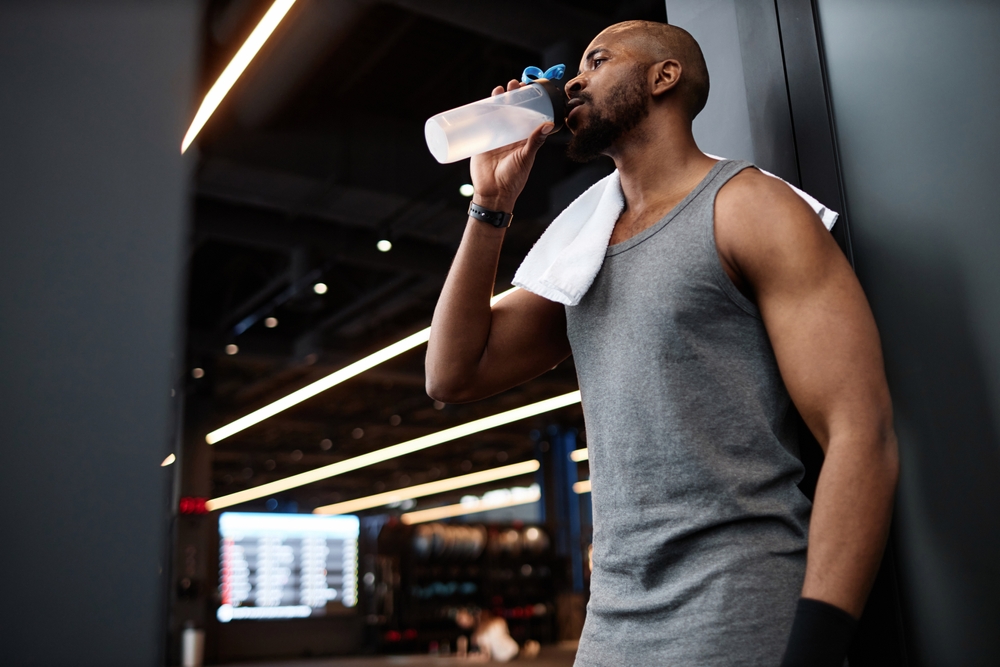Elite training facilities worldwide have quietly adopted these sophisticated protocols, which involve strategic fluid manipulation that extends far beyond traditional water consumption. The results speak for themselves: measurable improvements in endurance, enhanced temperature regulation and superior cardiovascular efficiency during competition.
This scientific approach to hydration optimization has emerged from rigorous research conducted in sports medicine laboratories, where investigators have uncovered how precisely timed fluid intake can create distinct physiological advantages. The findings challenge decades of accepted hydration practices and offer athletes a proven pathway to unlock previously untapped performance potential.
Revolutionary fluid science transforms performance
Modern research has revealed startling insights about the human body’s response to calculated fluid loading strategies. When executed with precision, these advanced protocols can increase blood plasma volume by approximately 1.5 percent of total body weight, creating measurable advantages that translate directly into competitive success.
The enhanced fluid state delivers cascading benefits throughout multiple body systems. Athletes experience dramatically reduced cardiovascular strain during high-intensity efforts, as expanded blood volume enables more efficient oxygen delivery to working muscles. This physiological enhancement becomes particularly pronounced during extended competitions where maintaining peak output over time determines victory or defeat.
Temperature regulation represents another crucial advantage of strategic hyperhydration. The expanded fluid reserves help athletes maintain lower core temperatures during exertion, preventing the performance-crushing effects of overheating that plague competitors using traditional hydration methods. Enhanced sweat production capabilities create a superior natural cooling system that becomes increasingly valuable as exercise intensity and duration increase.
Athletes implementing these protocols consistently demonstrate superior cognitive function during extended efforts. Mental sharpness remains intact as physical fatigue accumulates, allowing for better tactical decisions and maintained reaction times when competitions reach critical moments.
Precision timing unlocks maximum benefits
The effectiveness of advanced hydration protocols depends entirely on strategic timing across multiple phases of preparation and performance. Sports scientists have mapped five distinct windows that form the backbone of successful implementation, each requiring specific approaches tailored to the body’s evolving needs.
Strategic pre-loading phase
The process begins four hours before intense activity, when athletes consume calculated fluid and electrolyte combinations. Research establishes optimal intake targets of 5 to 7 milliliters per kilogram of body weight during this crucial window, providing sufficient time for absorption and distribution throughout the system.
Maintenance and fine-tuning
Two hours before exercise, focus shifts to preserving elevated hydration while avoiding fluid accumulation that could impair performance. This delicate balance requires athletes to consume smaller volumes at regular intervals, maintaining optimal status without creating discomfort or digestive issues.
Competition readiness
The immediate pre-exercise period involves final adjustments based on individual tolerance and environmental conditions. During activity, replacement strategies must account for ongoing losses while avoiding the serious risks associated with excessive fluid intake.
Recovery optimization
Post-exercise hydration serves dual purposes: restoring fluid balance and preparing the body for subsequent training sessions. This recovery window presents opportunities to support natural repair processes while maintaining the enhanced hydration state for future performance demands.
Electrolyte mastery drives success
Successful hyperhydration transcends simple water consumption to encompass sophisticated electrolyte management. Sodium functions as the primary regulator of fluid distribution, making its precise calibration absolutely essential for protocol effectiveness and athlete safety.
Scientific investigations have established optimal sodium concentrations between 2,990 and 3,772 milligrams per liter of fluid for maintaining proper cellular function. This specific range prevents dangerous fluid shifts that could compromise both performance outcomes and athlete wellbeing.
Elite athletes achieve these targets through strategic nutritional choices rather than relying exclusively on supplements. Consuming sodium-rich broths, soups and specially formulated foods provides steady absorption rates while delivering additional nutrients that support comprehensive performance enhancement.
Personalized protocols maximize individual potential
The most successful hyperhydration strategies account for significant individual variations in physiological response to fluid loading. Body composition influences absorption rates and distribution patterns, while environmental factors such as temperature and humidity dramatically affect ongoing hydration requirements.
Female athletes often require modified approaches due to hormonal fluctuations that impact fluid retention characteristics. Training experience levels also influence adaptation capabilities, suggesting that athletes new to hyperhydration should implement protocols gradually to allow proper physiological adjustment.
Environmental conditions play particularly crucial roles in protocol design. Hot, humid environments accelerate fluid losses through increased sweating, demanding more aggressive replacement strategies. Cooler conditions may permit conservative approaches while maintaining optimal hydration status throughout competition.
Advanced monitoring ensures safety and effectiveness
Successful hyperhydration implementation requires sophisticated monitoring systems to ensure both safety and optimal results. Athletes must track multiple physiological indicators to assess their body’s response and make necessary real-time adjustments.
Regular weight measurements provide objective feedback about fluid retention, while urine color analysis offers immediate visual assessment of hydration status. Heart rate responses during exercise indicate whether protocols are delivering expected cardiovascular benefits, while sweat rate calculations inform replacement needs during activity.
Building championship-level practices
Long-term success demands gradual implementation and consistent monitoring. Athletes should increase fluid intake progressively, allowing physiological adaptation without experiencing performance decrements or safety concerns.
Integration with comprehensive nutritional strategies maximizes effectiveness. Carbohydrate timing affects fluid retention capabilities, while protein consumption influences cellular hydration status. Strategic meal planning ensures all elements work synergistically to support peak performance outcomes.
As sports science advances, hyperhydration stands as a proven method for athletes seeking evidence-based performance improvements. When implemented thoughtfully and monitored carefully, these protocols provide meaningful competitive advantages that help elite performers reach their absolute potential.














